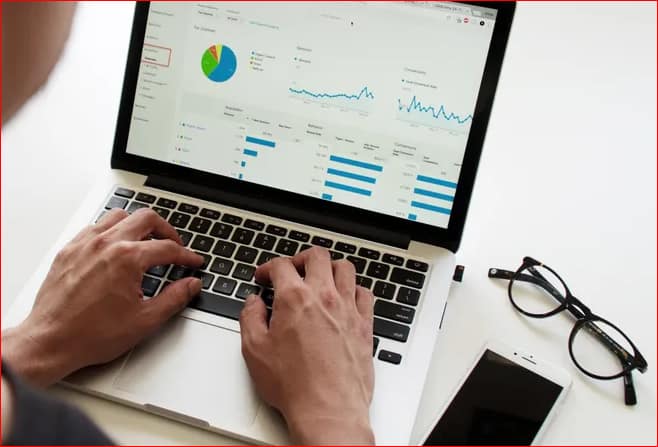
Website Traffic Stats - 9 Things You Need to Know
In the world, there are over 5.07 billion daily Internet users, so you can reach a large audience with your website. However, you need to know whether your website is capable of attracting those visitors before you can tap into that potential. Start with your website traffic statistics. These numbers show how many people visit your site and what they do while they are there. Your marketing efforts can be evaluated by web stats. It’s possible to gauge whether they’re generating traffic. Metrics are only useful if you know how to interpret them. Find out what the most important website traffic stats mean for your business by reading on.
What Is the Importance of Website Stats?
You can learn a lot about your business from your website stats. By doing this, you can determine if there are any improvements you can make to the website itself. It’s possible that people aren’t staying long enough to read or watch an article, so they won’t discover other interesting content.
By analyzing these stats, you can determine what you need to do to increase conversions on your website.
An explanation of website traffic statistics
In order to improve your website and attract more visitors, you need to understand how it’s currently performing. Website statistics can be gathered from a variety of sources. Below are some of the most commonly used metrics.
1. Visitors who are unique
Unique visitors are the number of new users who visit your site. Repeat visits from the same person are not included. It counts as one unique visit if you visit a website 10 times in one day.
Unique visits are counted within a 30-day period, so even if you visit the same site two or three days later, it counts as one unique visit.
2. Visits (or sessions) to a website
A website visit is counted by a program when a user requests a page from the server. One visit will be generated by this.
If someone visits your site and clicks on something to load another page, this counts as another visit. 48 visits will be recorded if someone visits your site 48 times in 30 minutes.
You can think of a session as the amount of time a user spends on your website clicking around. Marketers use this number to measure engagement.
3. Amount of total page views
Page views are the total number of times a page has been viewed from your site. Multiple views as well as single views are included in this category. A visitor who views 10 pages on your site will be counted as one visitor, but 10 total page views.
4. Visits per page
Your site’s pages per visit measure how engaged your visitors are with your content. Calculated by dividing the total number of visitors by the total number of page views.
Page-per-visit (P/V) ratios indicate that people are spending more time viewing and interacting with your content. Having a website that converts visitors into leads or customers is good news for you.
5. Time spent on site (or average session duration)
It is the average amount of time people spend on your website. The amount of time spent on a website is calculated by dividing it by the total number of visitors.
When your average is high, people are spending a lot of time interacting with your content rather than just clicking through quickly. Visitors who spend an hour on your site are more likely to be interested in what you have to offer than those who only look at it for 30 seconds.
Regardless of industry, the average session lasts about one minute.
6. The bounce rate
The bounce rate is the number of visitors who leave a website after viewing only one page. You can use it to determine whether people are engaging with your webpage’s content. In addition, it indicates whether users are finding what they’re looking for.
If your bounce rate is under 40 percent, your website is attractive and engaging.
7. Site visits from mobile devices
Mobile traffic occurs when a user accesses your website using a mobile device. Over half of all internet traffic is generated by mobile devices.
Check to see if the website loads fast on phones and is designed for small screens if you notice low mobile visits.
8. Backlinks
Links pointing to your website from other websites are called inbound links. Your website’s links to other sites indicate to Google that you’re a reputable source of information. In turn, you’ll be rewarded with higher placement in search results.
However, not all backlinks are created equal. All inbound links contribute to your SEO ranking, but not all will give you the same boost.
9. Sources of traffic
Your website’s traffic sources are the channels that bring visitors to it. Organic and paid search results can be divided into two categories.
Search engines like Google, social media like Facebook and Twitter, email campaigns, or anything else you don’t pay for is organic traffic. A paid traffic campaign can be anything from PPC ads on search engines to social media campaigns.
Design a Website That Attracts Visitors
SEO relies heavily on your website traffic statistics. It’s crucial that users can easily navigate your website and find what they’re looking for if you want to improve your metrics. You need a clean design with plenty of white space and clear navigation menus in order to accomplish this.
Creating a professional-looking website isn’t as easy as it sounds. Why deal with the hassle when our agency will handle it for you? Learn more about how we can help you create a website that drives traffic by contacting our designers today.
